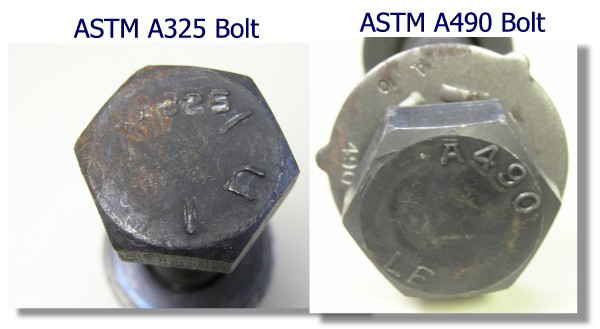In the mid-1900s, high-strength bolts were introduced and quickly replaced rivets as the preferred method for connecting members together in the field because of their ease of installation and more consistent strengths. High strength is necessary since most bolts are highly tensioned in order to create large clamping forces between the connected elements. They also need lots of bearing and shear strength so as to reduce the number of fasteners needed.
There are two basic ASTM high-strength bolt specifications and one non-high-strength ASTM bolt specification that we will be using. The high-strength bolts are ASTM A325 and ASTM A490. The non-high strength bolt is ASTM A307.
The ultimate tensile strengths for A325 and A490 bolts are 120 ksi and 150 ksi respectively. These values are rarely needed in applying the equations in the AISC specification, but are useful to know when using theoretical equations for special circumstances. We will also be obtaining bolt strength information for use in the AISC equations from SCM table J3.2 on page 16.1-104. We'll cover that table in more detail later.
The ASTM bolt specifications require that the bolts and their associated nuts and washers be clearly identified with their specification number. Figure 2 shows the identifiers for A325 and A490 bolts.
A Beginner's Guide to the Steel Construction Manual, 13th edition https://www.bgstructuralengineering.com/






Comments :
0 Comments to “Bolt Materials”
Post a Comment
If you have any questions, concerns, or feedback about our website, our team is always here to assist you.